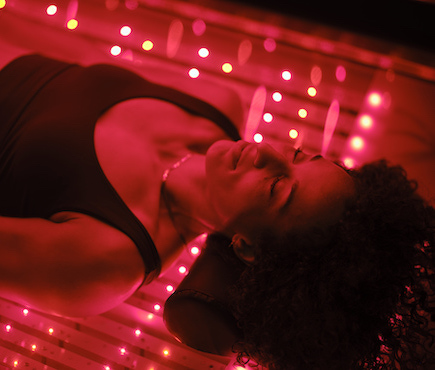
Red light therapy (RLT) has become a popular wellness trend, celebrated for its benefits in skincare, muscle recovery, and even mental health. But one of the lesser-known areas where RLT is gaining attention is fertility. As more individuals and couples seek natural alternatives to support their reproductive health, red light therapy is emerging as a promising, non-invasive solution.
In this guide, we’ll break down what red light therapy is, how it works on a cellular level, and how it may positively influence both male and female fertility.
What Is Red Light Therapy? Understanding the Basics,
Red light therapy, also called Photobiomodulation (PBM), is a treatment that uses specific wavelengths of red and near-infrared light to stimulate cellular activity. These wavelengths penetrate the skin and are absorbed by mitochondria, the “powerhouses” of our cells. This energizes the cells, boosts regeneration, and supports natural healing mechanisms in the body.
Unlike pharmaceutical options, red light therapy targets the root of health issues—cellular energy production—making it a compelling holistic option for various conditions, including fertility challenges.
If you’re new to red light therapy, check out our other guides: “How Does Red Light Therapy Work?” and “6 Mistakes Not to Make When Doing Red Light Therapy.”
The Science Behind Red Light Therapy: Cellular Healing in Action
At its core, RLT enhances mitochondrial function, increasing adenosine triphosphate (ATP) production—the energy currency of the cell. This energy boost helps the body repair and regenerate more efficiently.
When applied to reproductive health, this cellular upgrade can improve function in the ovaries, uterus, and testes—key players in conception. By restoring and energizing these systems, RLT supports the body’s natural fertility mechanisms without invasive procedures or medications.
3 Ways Red Light Therapy Can Improve Fertility,
1. Improved Blood Flow to Reproductive Organs
One of the most direct benefits of RLT is increased circulation. Enhanced blood flow means more oxygen and nutrient delivery to the reproductive organs, helping them function optimally. For women, this can mean a healthier uterine lining and improved ovarian function. For men, it can support better testicular health and sperm production.
2. Reduced Inflammation and Oxidative Stress
Chronic inflammation and oxidative stress are major contributors to infertility. These conditions can damage reproductive tissues, eggs, and sperm. Red light therapy combats both by promoting anti-inflammatory processes and boosting antioxidant defenses. Studies suggest that reduced inflammation correlates with increased conception rates, making RLT a promising therapy for those struggling with underlying inflammatory conditions.
3. Boosted Mitochondrial Health in Eggs and Sperm
Mitochondrial health is crucial for fertility. In women, high-quality mitochondria are essential for viable eggs and healthy embryonic development. In men, they support sperm motility and viability. Red light therapy helps rejuvenate aging mitochondria, supporting better gamete (egg and sperm) function and potentially improving the chances of conception.
What Does the Research Say?
Though still an emerging field, early studies on red light therapy and fertility have shown promising results. Some research has demonstrated improvements in egg quality, sperm count, and overall reproductive organ function after consistent use of RLT.
Healthcare professionals specializing in integrative and reproductive medicine are increasingly recommending red light therapy as a complementary treatment. With the rise of at-home RLT devices, it’s easier than ever to incorporate this therapy into your daily routine—no clinic visits required.
Is Red Light Therapy Right for You?
While red light therapy is generally safe and well-tolerated, it’s important to consult with a fertility specialist or integrative doctor before starting any new treatment—especially if you’re already undergoing fertility treatments like IVF or IUI.
If you’re exploring natural options and want to avoid invasive procedures, red light therapy could be the supportive solution you’re looking for.




